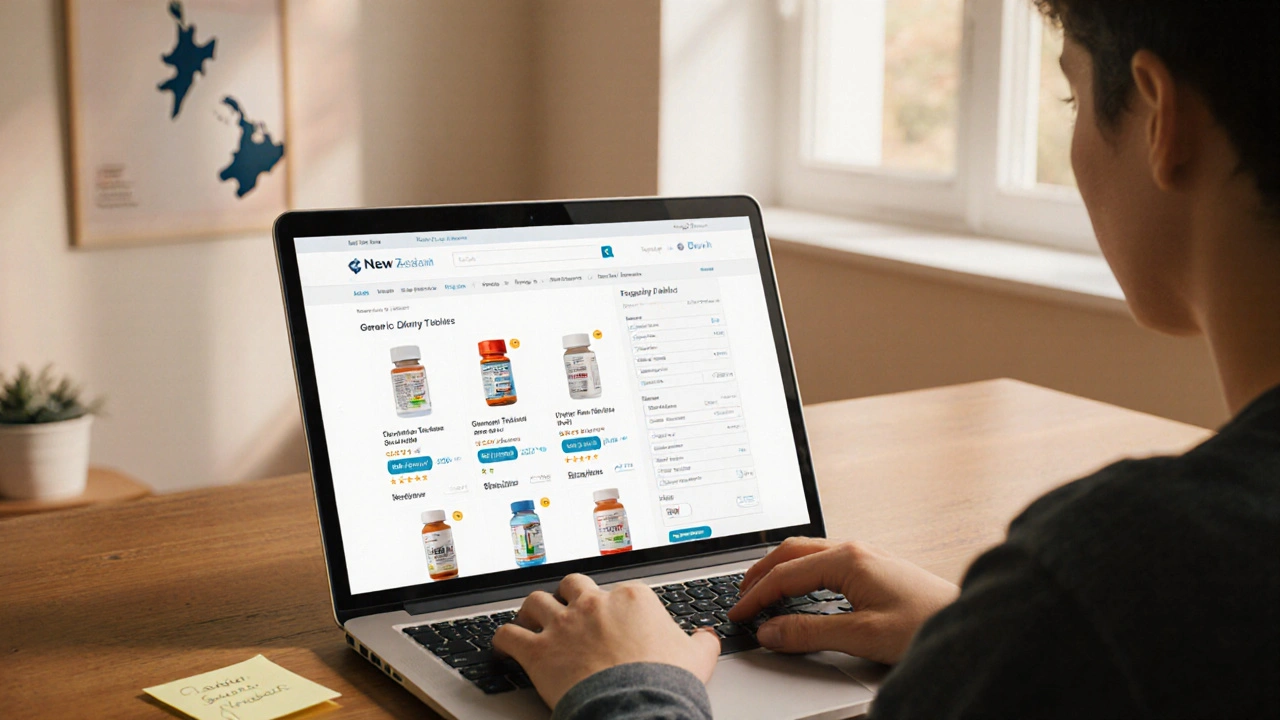
You started amiodarone to keep your heart in rhythm. Great. The catch? It tangles with a lot of other meds and even some foods. Miss these interactions and you raise your risk of bleeding, fainting, or a scary heart rhythm. This guide keeps it practical-what to avoid, how to adjust, what to watch, and how to stay safe without giving up your life.
- TL;DR
- Amiodarone sticks around for weeks to months and blocks key pathways (CYP3A4, CYP2C9, P‑gp). Interactions can show up late and last long.
- High‑risk pairs: warfarin (often cut dose 25-50% and check INR), digoxin (halve dose and watch levels), simvastatin/lovastatin (limit or switch), certain antibiotics/antifungals (QT risk, avoid).
- DOACs (apixaban, rivaroxaban, dabigatran): higher bleeding risk-check kidney function and the label; consider dose tweaks; monitor closely.
- Avoid grapefruit juice and St John’s wort. Be careful with beta‑blockers, diltiazem/verapamil, and meds that prolong QT.
- Red flags: fainting, very slow pulse, new chest pain, severe breathlessness, black stools, coughing blood. Get urgent care.
- Before any new med, ask your pharmacist/doctor. Keep a one‑page meds list. Get bloods and an ECG every 6 months unless told otherwise.
Why interactions with amiodarone are different (and how that changes your plan)
Most drug interactions come and go within days. Amiodarone isn’t like most drugs. It’s fat‑soluble, builds up in tissues, and has a half‑life measured in weeks. That means an interaction can hit late and hang around long after you stop it.
Mechanically, amiodarone and its active metabolite block several enzymes and transporters that clear other drugs-mainly CYP3A4, CYP2C9, and P‑glycoprotein. That sounds technical, but here’s the simple version: other drugs can pile up in your system or push your heart rate too low.
“Amiodarone exhibits a long elimination half‑life (several weeks) and inhibits CYP3A4, CYP2C9, and P‑glycoprotein, leading to clinically significant interactions that may persist after discontinuation.” - FDA Prescribing Information for Amiodarone (2024)
One more twist: amiodarone itself can slow the heart and lengthen the QT interval. So when you mix it with other QT‑prolonging meds or strong rate‑slowers, the effect stacks up. That’s why some combinations are flat‑out no‑go.
What jobs are you trying to get done here? Most people want to: 1) check if their current meds and supplements clash with amiodarone, 2) know what changes to make if a combo is needed, 3) spot danger signs early, 4) build a simple monitoring plan, and 5) handle common scenarios like chest infections, pain, or COVID antivirals. That’s exactly how this guide is structured.

What interacts with amiodarone (and what to do about it)
Here’s a practical map of the biggest interaction families. Keep it handy. If you remember one phrase, make it this: amiodarone drug interactions are common but manageable with a plan.
| Drug or class | Mechanism | Main risk | What to do |
|---|---|---|---|
| Warfarin | CYP2C9 inhibition | Bleeding (INR spike) | Pre‑empt 25-50% warfarin dose cut; check INR 2-3 times/week for 2-4 weeks, then space out. |
| Digoxin | P‑gp inhibition | Toxicity (nausea, vision, arrhythmia) | Halve digoxin dose on start; check level at ~1 week and with symptoms. |
| Simvastatin, Lovastatin | CYP3A4 inhibition | Myopathy/rhabdo | Limit simvastatin ≤20 mg/day; avoid high doses; consider pravastatin or low‑dose rosuvastatin. |
| Atorvastatin | CYP3A4 inhibition (moderate) | Myopathy risk | Use lowest effective dose; watch for muscle pain and dark urine. |
| Apixaban, Rivaroxaban | P‑gp ± CYP3A4 effects | Bleeding | Often no mandatory change; higher caution if older or CKD; follow label and monitor bleeding signs. |
| Dabigatran | P‑gp inhibition | Bleeding | Check renal function; dose may need reduction per label; avoid if severe renal impairment. |
| Macrolides (clarithro, erythro), Fluoroquinolones (cipro, levo) | QT prolongation | Torsades, arrhythmia | Prefer alternatives (e.g., doxycycline) if appropriate; ECG if must use. |
| Azole antifungals (ketoconazole, itraconazole, voriconazole) | Strong CYP3A4 inhibition + QT | Serious arrhythmia | Avoid if possible; seek non‑azole options (e.g., terbinafine for onychomycosis). |
| Non‑DHP CCBs (diltiazem, verapamil), Beta‑blockers | Additive AV nodal block | Bradycardia, heart block | Use one rate‑slower at a time when you can; start low, monitor pulse/ECG. |
| Nirmatrelvir/ritonavir (Paxlovid) | Strong CYP3A4 inhibition | Toxic amiodarone levels | Generally contraindicated; consider alternatives (e.g., remdesivir). Do not "hold" amiodarone hoping it clears-it doesn’t quickly. |
| Hep C DAAs with sofosbuvir | Bradycardia risk | Severe bradycardia | Avoid with amiodarone; seek specialist advice and alternatives. |
| Grapefruit juice | Intestinal CYP3A4 inhibition | Higher amiodarone levels | Avoid grapefruit and Seville oranges. |
| St John’s wort | CYP3A4 induction | Reduced amiodarone effect | Avoid; it also clashes with many other meds. |
| Diuretics (furosemide), laxative overuse | Low K+/Mg2+ | QT‑related arrhythmia | Check and correct electrolytes; consider magnesium if low, under guidance. |
| Trimethoprim‑sulfamethoxazole | Warfarin interaction | INR spike if on warfarin | Flag if you’re also on warfarin; seek an alternative antibiotic if possible. |
| SSRIs/SNRIs (citalopram, escitalopram) | QT prolongation | Arrhythmia risk | Consider sertraline as a lower‑QT option; ECG if higher doses are used. |
| Linezolid, methadone, some antipsychotics | QT prolongation | Arrhythmia risk | ECG monitoring or alternative therapy if feasible. |
| Anaesthetics (general) | Bradycardia/QT effects | Intra‑op arrhythmia | Tell your anaesthetist you take amiodarone; they will plan around it. |
Those are the headline pairs. Now let’s turn that into clear actions you can use when life happens.
If you’re on warfarin
- Expect a 25-50% warfarin dose cut when amiodarone is started.
- Check INR 2-3 times a week for the first 2-4 weeks, then weekly until stable.
- If you stop amiodarone, the effect unwinds slowly. Keep checking INR for weeks.
If you’re on digoxin
- Halve the digoxin dose on the day amiodarone starts, unless your cardiologist says otherwise.
- Check a level after about a week and again after any dose changes.
- Call if you get nausea, loss of appetite, yellow vision, or new palpitations.
If you need a statin
- Prefer pravastatin or low‑dose rosuvastatin.
- If using simvastatin, keep it ≤20 mg/day.
- Report muscle pain, weakness, or dark urine. Get CK checked if symptoms hit.
If you’re on a DOAC (apixaban, rivaroxaban, dabigatran)
- Ask your prescriber to review kidney function and the product label with amiodarone on board.
- Apixaban/rivaroxaban: usually no automatic dose change, but closer monitoring for bruising, nosebleeds, black stools.
- Dabigatran: amiodarone raises levels; a dose reduction can be appropriate in some patients, especially with reduced kidney function.
If you get a chest or sinus infection
- Flag amiodarone to your GP/pharmacist. Ask if doxycycline fits. Avoid macrolides and many fluoroquinolones if possible.
- If an azole antifungal is offered, ask for a safer alternative or plan ECG monitoring.
If you’re offered Paxlovid for COVID‑19
- Ritonavir spikes amiodarone levels. This combo is generally contraindicated.
- Because amiodarone’s half‑life is so long, “stopping it for 5 days” does not fix the risk. Ask about other options like remdesivir.
If you take supplements or OTC meds
- Avoid St John’s wort. Be wary of “energy” products and decongestants with pseudoephedrine-they can trigger arrhythmias.
- Magnesium or potassium can help if you’re low, but dose only with guidance and blood tests.
- Paracetamol is generally safer for pain than high‑dose ibuprofen, especially if you’re also on blood thinners. High‑dose paracetamol can affect INR-check if you’re on warfarin.
Food and drink
- Avoid grapefruit and Seville orange products.
- Moderate coffee is usually fine; skip energy drinks.
- Keep alcohol light; your liver and thyroid already have enough to do with amiodarone.

Your safety checklist, monitoring plan, and the red‑flag symptoms you should not ignore
Good routines beat guesswork. Use this simple plan and you’ll catch most issues early.
- Carry a one‑page meds list. Include doses, why you take each, and any allergies. Show it at every appointment and pharmacy visit.
- Before any new prescription, OTC, or supplement, say: “I take amiodarone-does this interact?”
- Check your pulse a few times a week. If it’s under 50 and you feel dizzy or faint, call.
- Use one pharmacy for everything if you can. They spot patterns fast.
| What to monitor | When | Why it matters |
|---|---|---|
| ECG | Baseline, then every 3-6 months, and with dose changes or symptoms | Checks QT and rhythm; catches bradycardia early. |
| Thyroid (TSH ± T4) | Baseline, then every 6 months | Amiodarone can cause hypo‑ or hyperthyroidism. |
| Liver enzymes (ALT/AST) | Baseline, then every 6 months | Flags liver stress before you feel it. |
| Chest X‑ray or review of pulmonary symptoms | Baseline, then annually or sooner if cough/shortness of breath | Detects rare but serious lung toxicity. |
| Eye exam | Baseline if possible; then if visual changes | Corneal deposits are common; vision changes need review. |
| INR (if on warfarin) | Frequently at start/changes; then per clinic advice | Keeps bleeding risk in check. |
| Digoxin level (if on digoxin) | About 1 week after start/change; then as advised | Avoids toxicity. |
| Electrolytes (K+, Mg2+) | With diuretics, vomiting/diarrhoea, or arrhythmia symptoms | Low levels raise QT risk. |
Red flags-seek urgent care now
- Fainting, near‑fainting, or a new pounding, irregular heartbeat.
- Pulse under 40 bpm, especially with dizziness or confusion.
- Shortness of breath that’s new or rapidly worsening, or a persistent dry cough.
- Black, tarry stools; vomiting blood; severe abdominal pain.
- Sudden vision loss or severe eye pain.
Green flags-you’re on track
- No new palpitations or dizzy spells.
- INR stable if on warfarin; no spontaneous bruising.
- ECG and bloods up to date in the last 6 months.
Heuristics you can trust
- If a drug is known for QT issues, assume extra risk with amiodarone.
- If it’s cleared by CYP3A4 or P‑gp, expect levels to rise with amiodarone nearby.
- If it slows the heart, don’t stack two unless there’s a clear plan.
- When in doubt, check with a pharmacist. They live for this stuff.
Evidence and guidance
- FDA Prescribing Information for Amiodarone (2024 update) notes long half‑life and multi‑pathway inhibition.
- New Zealand Medsafe Data Sheet for Amiodarone (2024) advises avoiding grapefruit and many CYP3A4 inhibitors.
- 2023 AHA/ACC/HRS Atrial Fibrillation Guideline covers antiarrhythmic risks and monitoring.
- New Zealand Formulary (updated 2025‑05) lists key interactions and dose advice for warfarin, digoxin, and DOACs.
Local tip from Wellington life: Most GPs here can fax or e‑send updated med lists to your community pharmacist. Ask for that after any change so your blister pack or repeats stay correct.
Mini‑FAQ
- How long do interactions last after stopping amiodarone? Weeks to months. The drug hangs around. Keep monitoring.
- Can I drink alcohol? Light drinking is usually okay, but heavy alcohol stresses the liver. Keep it modest and honest with your doctor.
- Is coffee okay? Regular coffee in moderation is fine; avoid energy drinks.
- Can I take cold/flu tablets? Avoid decongestants like pseudoephedrine or phenylephrine if you’re sensitive to heart rate spikes. Ask for a simple antihistamine or saline spray instead.
- What about herbal supplements? Steer clear of St John’s wort. With others, assume unknown risk and check first.
- Can I get Paxlovid if I have COVID? Usually no. It clashes with amiodarone. Ask about remdesivir or other options.
- What if I need surgery? Tell your surgical and anaesthesia team early. They’ll plan around amiodarone.
- Do I need to stop amiodarone before a dental procedure? No, but tell your dentist. If you’re on blood thinners too, bleeding planning matters.
Examples you can copy
- Start of amiodarone in someone on warfarin and simvastatin 40 mg: Cut warfarin dose ~30-40%, check INR every 3-4 days; switch simvastatin to pravastatin 40 mg or rosuvastatin 5-10 mg; check liver enzymes in 6-8 weeks.
- Dry cough after 4 months on amiodarone: Call your GP; get a chest exam and consider a chest X‑ray; review other QT drugs; check thyroid and liver while you’re at it.
- New UTI and the urgent care offers ciprofloxacin: Flag amiodarone; ask if nitrofurantoin or trimethoprim is suitable for your situation (watch warfarin if you’re on it).
- AF with fast rate despite amiodarone: Before adding a beta‑blocker, check ECG and blood pressure; start low dose; follow up in a week; watch for pulse under 50 or dizziness.
Step‑by‑step before starting any new med
- Tell the prescriber and pharmacist you take amiodarone.
- Ask: Does this drug prolong QT? Is it cleared by CYP3A4/CYP2C9/P‑gp?
- Check if a safer alternative exists.
- If you must use it, set a monitoring plan (ECG, labs, symptom checks).
- Book the follow‑up before you leave.
Amiodarone is powerful and, for many, the only thing that keeps the rhythm steady. With smart choices and steady monitoring, you can keep its benefits and lower the risks. Keep your list updated, ask the quick questions, and don’t tough out red flags-call early.
Next steps and troubleshooting
- If you’re on warfarin and just started amiodarone: Call your warfarin clinic or GP to set an INR schedule and a provisional dose cut.
- If your pulse is often below 50: Check how you feel. If dizzy or faint, call urgently. If you feel fine, book an ECG this week.
- If you’re offered any new antibiotic or antifungal: Ask, “Is this safe with amiodarone?” Doxycycline or amoxicillin often work for many infections, but it depends on the site and bug.
- If you take multiple heart rate slowers (beta‑blocker plus diltiazem, for example): Bring that to your cardiologist. Often, one is enough with amiodarone; stacking increases bradycardia risk.
- If you’re in New Zealand: Medsafe and the New Zealand Formulary are trusted references. Your community pharmacist can check both in minutes.
Sources: FDA Prescribing Information for Amiodarone (2024); Medsafe Amiodarone Data Sheet (2024); 2023 AHA/ACC/HRS Atrial Fibrillation Guideline; New Zealand Formulary (2025‑05). These are the standards clinicians use when making the calls above.





Vishnupriya Srivastava
August 30, 2025 AT 17:41Amiodarone is one of those drugs that feels like a silent landmine in your med list. I’ve seen patients on it for years and the interactions creep up like a slow leak - no warning, then boom, INR at 8.5 or QT at 580. The table here is gold, but honestly, the real win is the checklist. Most docs don’t even think to order ECGs every 6 months unless you beg. This should be a handout at every pharmacy.
Also, grapefruit juice? Yeah, I get it. But people still drink it. Like, they’ll say ‘it’s just one glass’ - and then wonder why they’re in the ER. This guide nails the ‘why’ behind the avoidances.
Matt Renner
August 30, 2025 AT 20:49This is an exceptionally well-structured and clinically precise resource. The integration of pharmacokinetic mechanisms with actionable clinical guidance elevates this beyond typical patient handouts. The emphasis on the prolonged half-life of amiodarone and its persistent inhibition of CYP3A4, CYP2C9, and P-gp is critical for understanding delayed and enduring interactions.
I would strongly recommend incorporating this into institutional protocols for anticoagulation management and polypharmacy reviews. The distinction between DOACs - particularly the nuanced advice regarding dabigatran and renal function - reflects a sophisticated understanding of real-world clinical decision-making. Thank you for this contribution to patient safety.
Ramesh Deepan
August 31, 2025 AT 19:34Bro, this is the kind of post that saves lives. I’m a med student in Delhi and we get taught ‘amiodarone bad with statins’ but no one explains why or how to fix it. This? This is what real teaching looks like.
Also, the Paxlovid thing? I had a guy come in last week with COVID and his GP wanted to give him Paxlovid even though he’s on amiodarone. I pulled up this guide and we got him remdesivir instead. No one argued. Because the evidence is right here.
And yeah, grapefruit juice? My aunt drinks it every morning. Now she knows. Thanks for making it simple without dumbing it down.
Also - if you’re on digoxin and feel like your vision is yellow? Go. Now. Not tomorrow. Not next week. NOW. This guide tells you why. Don’t wait.
And if you’re reading this and you’re on amiodarone - get your ECG. Get your TSH. Get your liver test. Don’t let ‘I feel fine’ be your excuse. You’re not fine until you’ve checked.
And if you’re a doctor reading this - print this. Give it to your patients. Don’t make them Google it. They’ll find worse.
Wayne Rendall
September 1, 2025 AT 01:51While the content of this guide is both accurate and commendable, the formatting of the table, particularly the inconsistent use of capitalization in the 'What to do' column, detracts from its professional utility. For instance, 'Pre-empt 25-50% warfarin dose cut' should be 'Pre-emptively reduce the warfarin dose by 25–50%' to maintain grammatical precision and clinical tone. Similarly, 'Halve digoxin dose on start' would benefit from rephrasing as 'Halve the digoxin dose upon initiation of amiodarone.'
Additionally, the phrase 'Check and correct electrolytes; consider magnesium if low, under guidance' lacks clarity - it should specify 'under medical guidance' to avoid ambiguity. These refinements would enhance its reliability as a reference document in clinical settings.
Ifeoluwa James Falola
September 1, 2025 AT 18:18Amiodarone interactions are scary but manageable. Know your meds. Talk to your pharmacist. Check your pulse. Don’t ignore the cough. Get the ECG. That’s it.
Adam Phillips
September 2, 2025 AT 10:10So like amiodarone just hangs around forever right like it’s not even a drug it’s more like a ghost that haunts your liver and your heart and your INR and then suddenly you take some stupid antibiotic and boom your heart decides to do the cha-cha and you’re in the ER wondering why you thought grapefruit juice was a good idea
And people say just stop the drug but no you can’t because it’s still in your fat like a slow poison party and your doctor’s like oh yeah we’ll monitor it and you’re like what even is monitoring
Also why is everything a QT risk now like is my coffee watching me
Anyway this guide is actually good I just needed to yell about it first
Also if you’re on Paxlovid and amiodarone you’re basically playing Russian roulette with your ventricles and no I’m not joking
Also I just took a beta blocker and now I feel like a potato